The Zinnia’s Revenge
I love this quote because it shows that garden writers are humans too. We have our loves and hates just like everyone else! Henry was not a fan of zinnias, but I love them! He carries on writing, “This is when zinnias—and also marigolds, petunias, bedding begonias, black-eyed susans, and all those other dull flowers—come into their own, somehow finding their way into even the most elegant gardens.”
What do you think about the list above? Do you think of these flowers as “dull” or “brilliant”? I love all of these flowers in my summer garden.
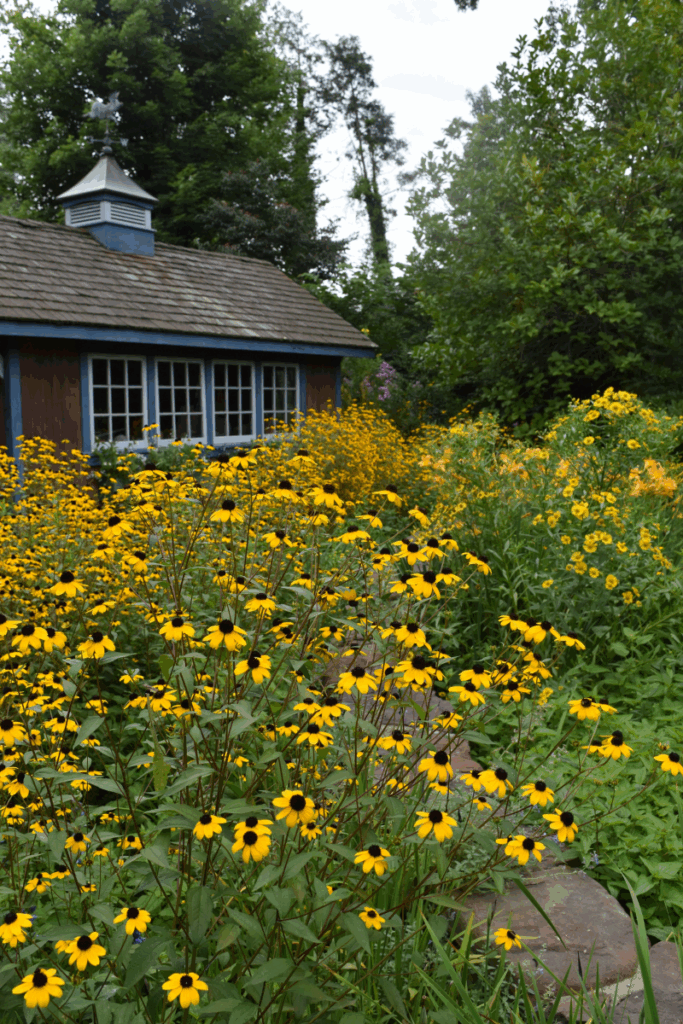
Their bright, saturated colors seem to balance summer’s heat and intense sunlight. Their prolific flowers are great for mason jar posies on picnic tables.
In Henry’s defense, I do think that all of the species that he dislikes in this list have had advances in breeding work in the 40 years since he was writing. Think of how many amazing new zinnias have been introduced to our gardens in that time that add to the color and shape diversity.
So, what does Henry recommend for your August and September garden? Of the species that he provides, I concur on a few such as Liatris, Physotegia, Cleome, and Cosmos. Some of his other suggestions are now considered to be invasive and less desirable than when he was writing in the early 1980s.
I agree with another statement that Henry makes about late summer gardens. He says; “The average gardener pays too little attention to August and September, and it might be said that the average garden goes to pot on July 16th as regular as clockwork.” Do you think that your garden goes downhill by late July and into August? If so, brave the heat – or whatever weather is happening – and look critically at your garden. Maybe you wish that you had planted more of ‘A’, or ‘B’, or even ‘Z’ (for Zinnias) to carry you through this month. To improve next year’s show at this time of year, think what plants you can add to the garden in autumn, or next spring. With a little forward planning, your garden can continue to look at its best even through August.
Hot off the Press!
I am so excited – the book is real! I have one copy of my new bulb book – The Essential Guide to Bulbs and it looks great. It is available for pre-order now at your local bookshop or online. It will be officially published in October.
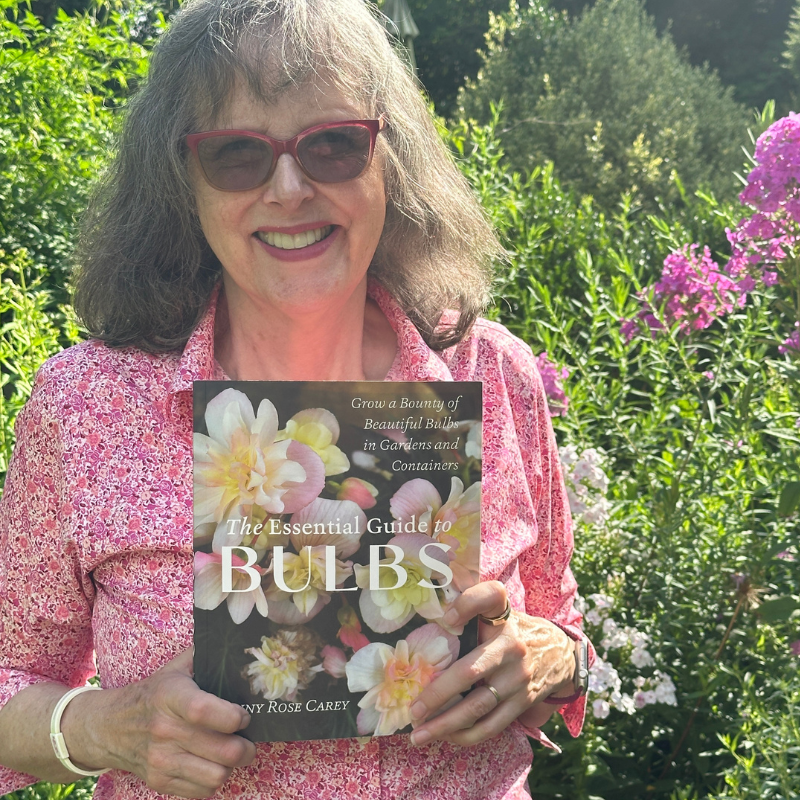
More About Weeding
After answering the question about weeding last month, I have had other suggestions and questions from readers. Barb in Emmaus said, in the spring when her new meadow was just sprouting, she randomly threw down a hula hoop and pulled weeds only inside the ring. She used this method to focus on one area, so that she could see the results quickly. Otherwise, the weeding was too overwhelming.
Another garden visitor to Northview asked about weeding the Herb Garden beds – especially in the center of the wide beds. I told her I only have to get into the beds a few times a year, and that there were actually very few weeds. To help me access the center, I do have some stepping-stones strategically placed through the beds. She was unconvinced that I didn’t weed the beds very often. I went on to explain my main task is editing out my own plants that I had put in, that were now too aggressive, for example goldenrod, mountain mint, and tansy.
Most of my garden weeds come from seeds thrown from the lawn when it is cut. To cut down on the seeding in of weeds, I separate the turf from the bed with stones, logs, or a path. Also, to reduce the number of ‘free weeds’ that come in with plants purchased at nurseries, I carefully scrape off the upper layer of potting soil into the compost bin.
Please feel free to send me a photo and ask a question to be included in a future email newsletter. I will just use your first name and state or country. Keep those questions coming.
Speaking of questions–I have been doing a garden segment on our local NPR radio station–WHYY each Thursday at about 4:45pm with Matt Guilhem. It has been a lot of fun to do!
Northview Photos
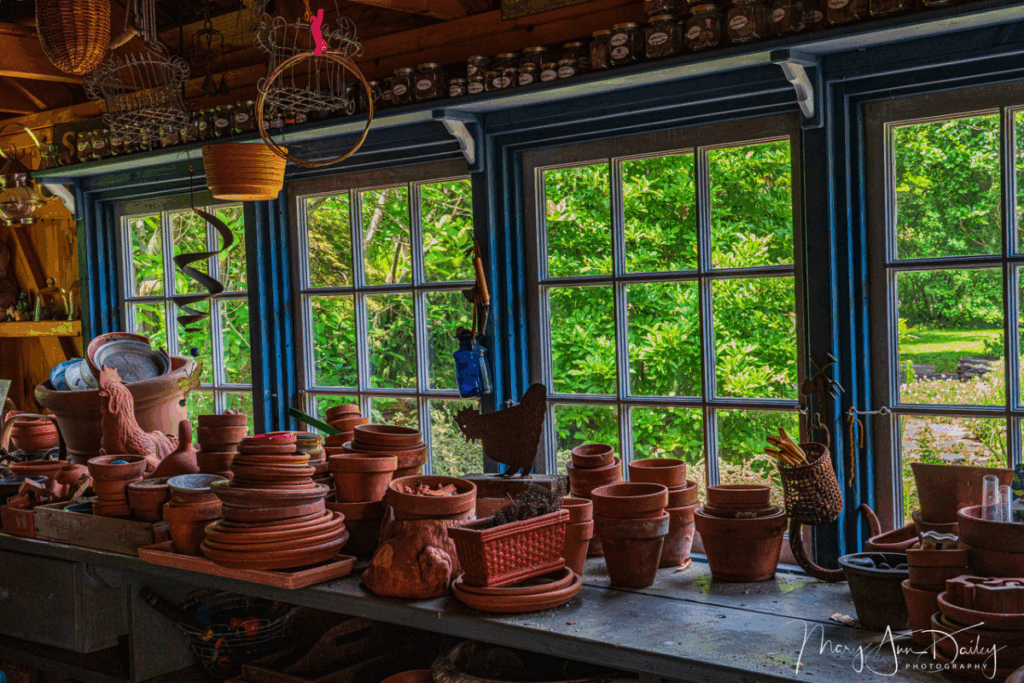
Thanks to Mary Ann Dailey who came to visit Northview with The Pottstown Garden Club – she sent me this lovely photo of the interior of my Potting Shed (and some other fabulous shots too). I love to see what visitors notice in my garden. Thank you, Mary Ann, for letting me share this photo.
Before You Garden: English Gardens
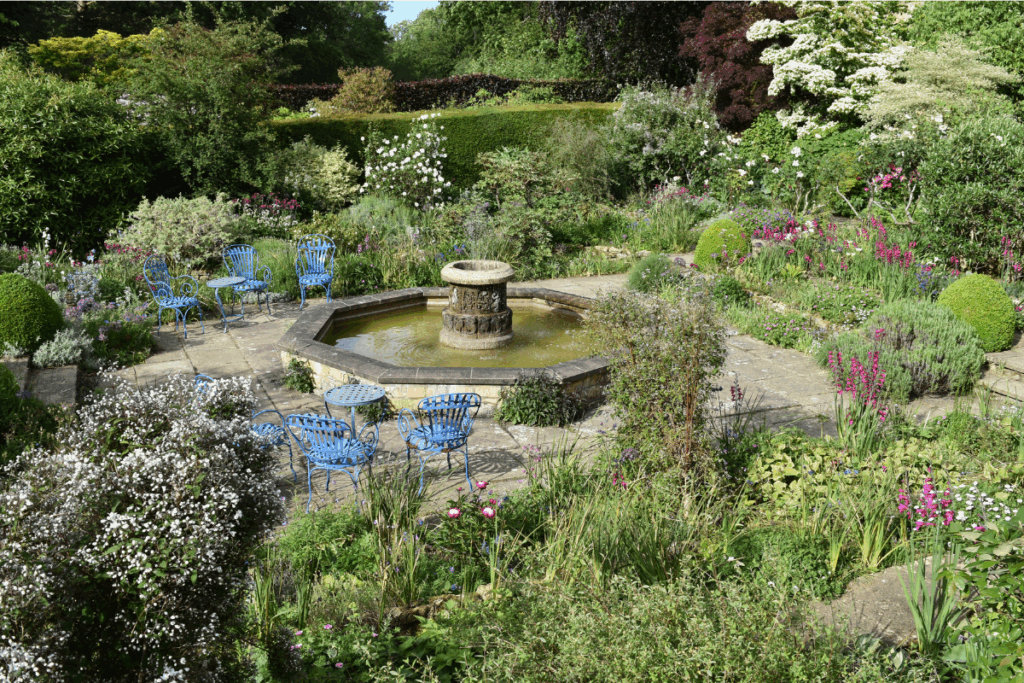
My blog this month is about another English Garden that I recommend visiting. Part 2 in the series is about Kiftsgate Court Gardens in the Cotswolds. The garden has fantastic views out to the Malvern Hills, as well as interior views from one garden to another.
Jenny Rose Carey on the Road
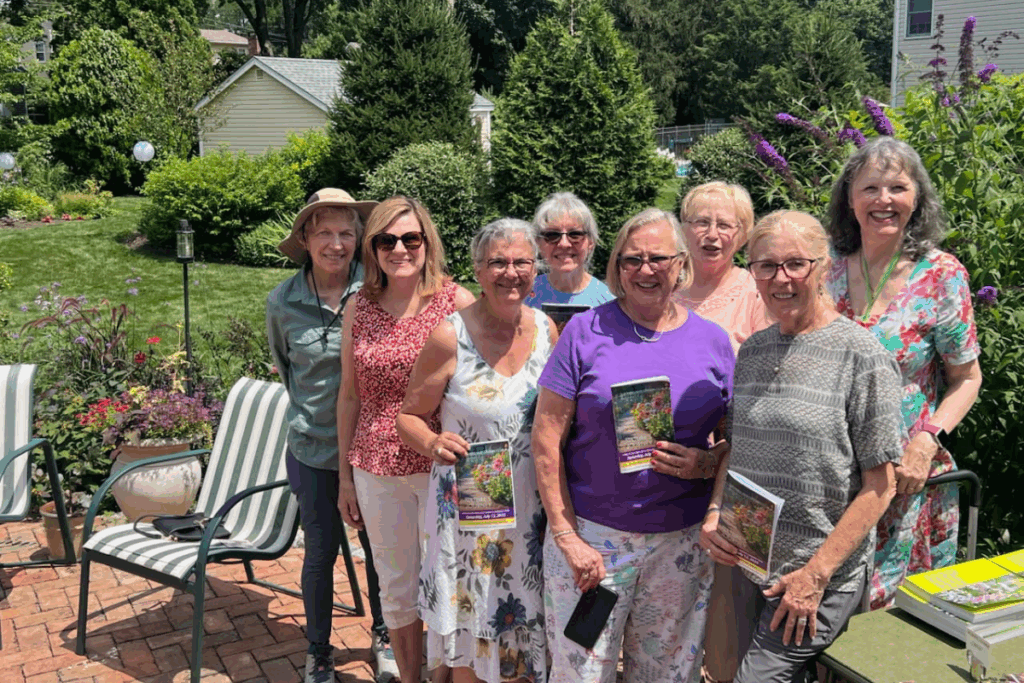
I was delighted to be invited to speak to garden tour visitors on the recent Parkland Garden Tour. My topic was a show and tell about how to grow more flowers. I brought cut stems from Northview. I pulled flowers for my bucket that I thought went well together by flower shape and color. Using a hand-held bunch of flowers is an easy way to get combinations that I like in the garden. The photo is of some lovely garden visitors on that day.
Plant of the Month: Zinnias
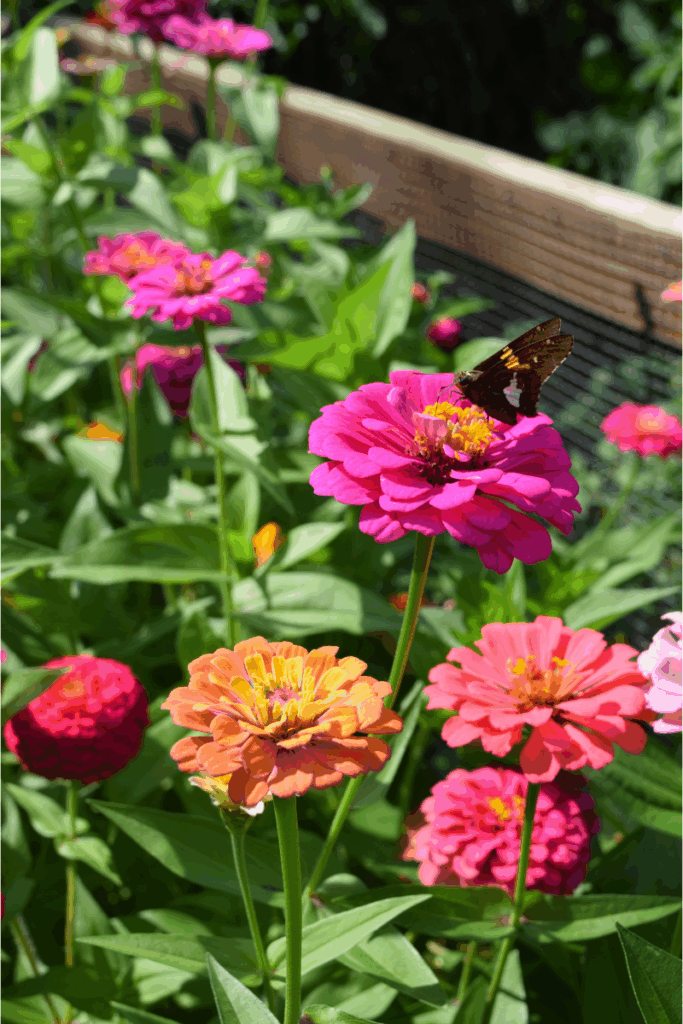
I don’t remember growing zinnias as a child growing up in England, but once I began gardening in Pennsylvania, I fell in love with them. They have such bright and cheerful colors, including my favorite pinks and magentas. The open-faced single flowers are excellent for pollinators, especially butterflies and bees that find them easy to land on.
I adore starting flowers from seed, and zinnias are one of the easiest and most rewarding. To make sure that you have new blooms until late summer succession, sow throughout the season (sow seeds in batches every few weeks until midsummer.)
This gives you fresh young plants into autumn, and you can pull out the older plants once they stop producing flowers.
Zinnias are annual plants. Their whole lifecycle is concerned with making plenty of seeds and then dying. To stop the dying part, keep on cutting the flowers to prevent them from going to seed. Cut blooms for arrangements and remove old flowers as they go over. Only leave seeds on the plants towards the end of the season – if you want to save them for next year.
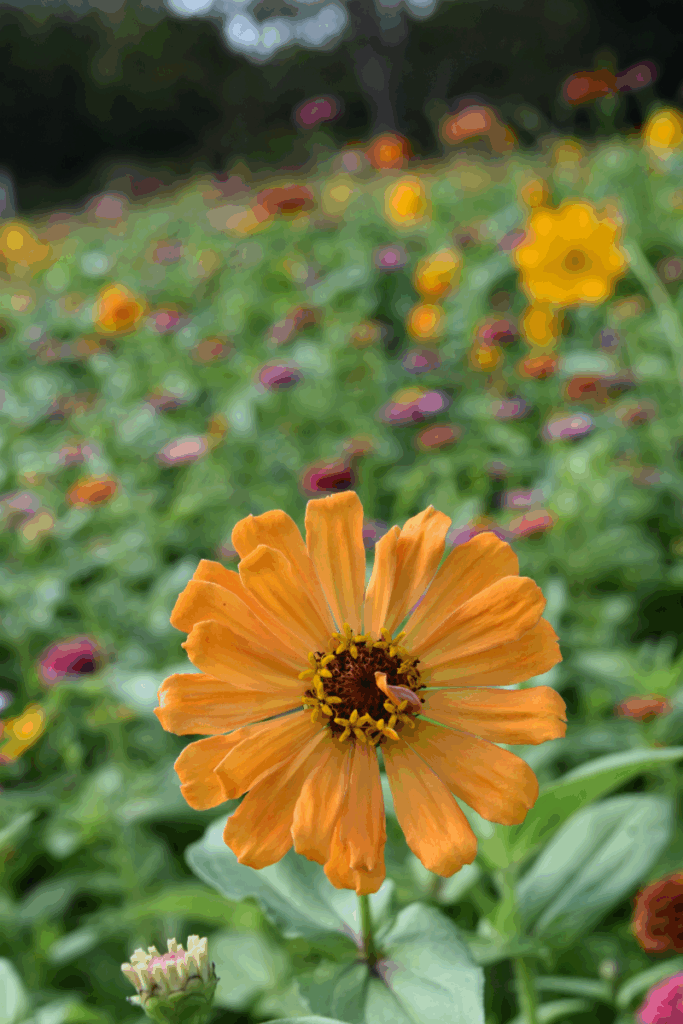
know some people get zinnias to self-sow by sprinkling the seeds back in the garden at the end of the year. I have never succeeded with that, but the seeds are cheap and easy to buy. They make great companions for Cosmos, Celosia, Marigolds, and Dahlias.
New zinnias are bred to be disease resistant, especially to powdery mildew. This is a fungal disease that looks like a white film is coating the leaves. There are several cultural things that you can do to prevent this.
The first is to grow zinnias in different places in the garden each year so that spores of powdery mildew do not accumulate in the soil or leaf litter. Next is to grow them where there is good air circulation. Water in the morning, rather than at night. Make sure that you are watering the soil and not the plant. Next year, when you are buying seed, check not only for plant height, flower shape and color, but also disease resistance. I have had luck with Benary’s Giant Zinnias. There are shorter disease resistant zinnias, such as the Profusion Series, that are used as edging plants. I rarely grow them because I use zinnias as cut flowers.
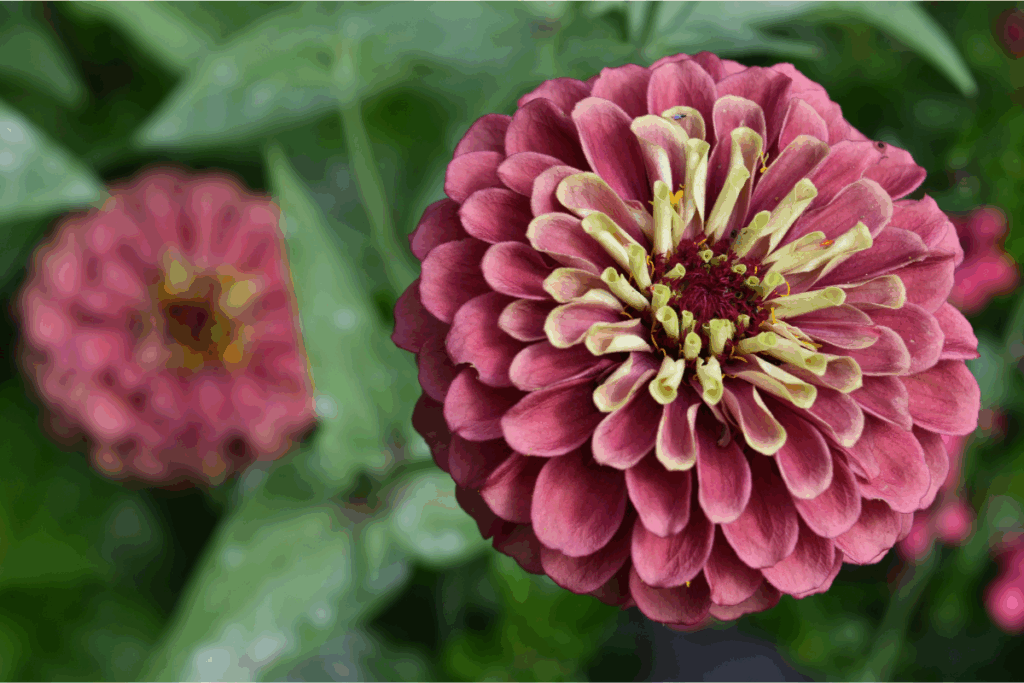
Don’t forget to keep on picking your flowers and enjoying some on the kitchen table with your fresh tomatoes. The colors look fabulous!
Book of the Month:
The Essential Earthman
Henry Mitchell was an esteemed columnist for The Washington Post for several decades. He died in 1993. Henry was brought up in Memphis, Tennessee. He brought his opinionated southern wit to his writing.

I have picked out three quotes that appealed to me. From this selection, you can see that Henry is eminently quotable and a great observer of gardens, gardeners and life.
“Marigolds are bright and beautiful if, like cousins, you don’t have too many of them at once.”
“If you are not aghast at how much space you have given evergreens … you do not have enough.”
“Gardening, it sometimes seems to me, takes more time that seems reasonable or probable.”
As with most gardeners, he had lots to say about the weather and takes a pragmatic approach. This compilation of his columns begins with his weather thoughts. “As I write this, … it’s about time for another summer storm to smash the garden to pieces, though it may hold off until the phlox, tomatoes, daylilies, and zinnias are in full sway.”
Who hasn’t thought the same thing, but how lovely to read it. He continues later in the essay, “so there is no point dreading the next summer storm that, as I predict, will flatten everything… Now the gardener is the one who has seen everything ruined so many times that he comprehends—truly knows—that where there was a garden once, it can be again.”
What an optimistic tone to end with. Happy Gardening!
In Case You Were Gardening…
The Confounding Colors of Azaleas and Gladioli, published July 17, 2025
From Seeds to Flowers, published February 7, 2024
You Are Not Alone in Your Garden, Published October 8, 2023
If you like this newsletter, please tell your gardening friends about it. It is easy to subscribe by contacting me via my website.
If you would like to see photos of my garden at Northview and images of my garden travels, please follow me on Instagram @NorthviewGarden and @JennyRoseCarey
Bye for now,

My new bulb book, The Essential Guide to Bulbs: Grow a Bounty of Beautiful Bulbs in Gardens and Containers, is available for pre-order now. In The Essential Guide to Bulbs, you will discover a treasure trove of bulb selections. This book covers the how-to for planting bulbs in beds and containers, along with tips on how to grow bulbs well for the best possible glorious outcomes.
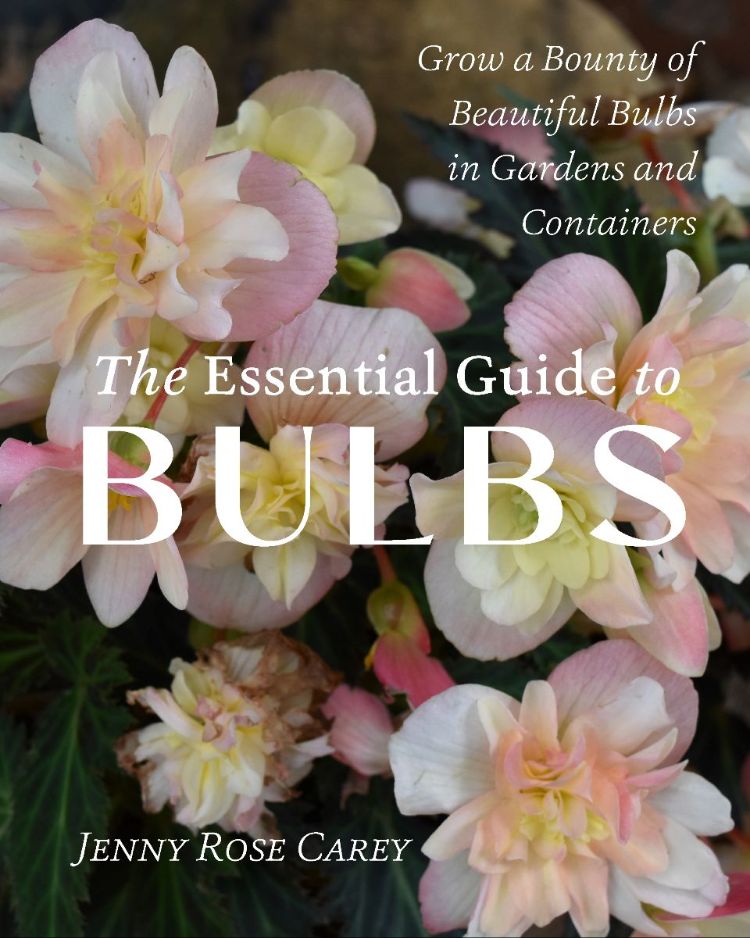
PS: If you want to hear more of my thoughts and support me in what I do, check out my books. Glorious Shade celebrates the benefits of shade and shows you how to make the most of it. This information-rich, hardworking guide is packed with everything you need to successfully garden in the shadiest corners of a yard. The Ultimate Flower Gardener’s Guide gives home gardeners the confidence they need to create the flower-filled garden of their dreams. Instead of concentrating primarily on color, it brings flower shape and texture to the fore, helping homeowners make plant choices that come together in an aesthetically pleasing way.





Leave a Reply